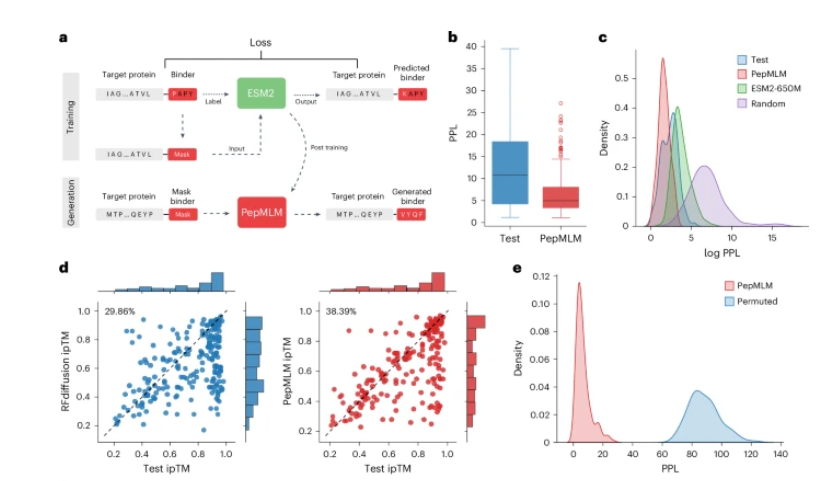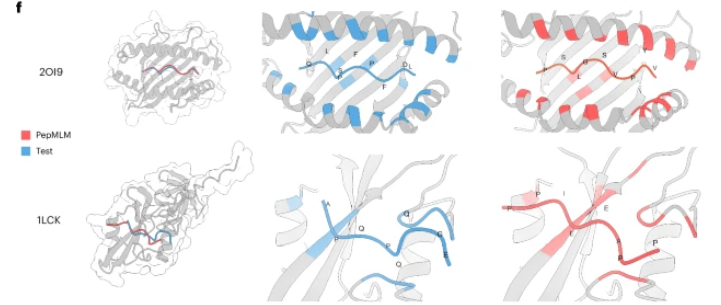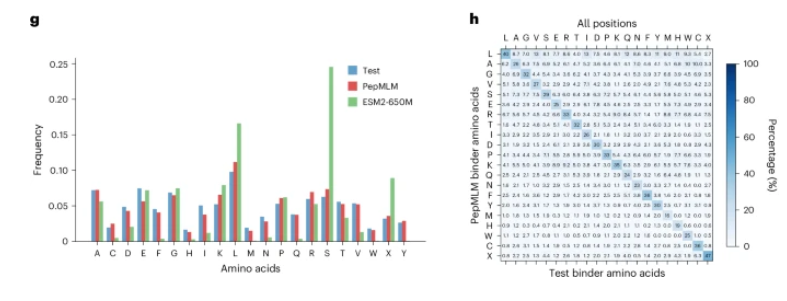A revolution is quietly unfolding in the pharmaceutical industry. Traditional drug development is like a blind man touching an elephant, where scientists must first understand every structural detail of a protein before attempting to design a drug molecule. This long-standing constraint in the pharmaceutical industry has now been completely broken by an AI model called PepMLM.
A research team from the University of Pennsylvania and Duke University has just accomplished a feat that could rewrite pharmaceutical textbooks: they taught an AI to precisely design targeted peptides based solely on a protein sequence, bypassing the time-consuming and laborious traditional step of structure analysis. The significance of this breakthrough is akin to jumping from the age of carriages to the era of airplanes.
The working mechanism of PepMLM is full of scientific ingenuity. The research team used a training strategy similar to "fill-in-the-blank" questions: they cleverly concatenated the target protein sequence with known peptide-binding segments, then intentionally hid part of the peptide segment, forcing the AI model to focus on reconstructing these masked areas. Through countless exercises, the AI gradually learned the ability to "read out" the best binding partners from the protein sequence, much like an experienced matchmaker who can find the perfect match just by reviewing a resume.

What is more exciting is that this is not just a theoretical breakthrough. The research team tested the peptides designed by PepMLM in rigorous cell experiments, and the results were impressive. These AI-designed peptides demonstrated remarkable precision, not only being able to specifically target multiple targets, but also effectively inducing the degradation of the target protein, like a well-trained sniper hitting the vital point with one shot.
In the critical battle against high-risk viruses, PepMLM delivered a performance that amazed the entire medical community: a 63% hit rate. This number represents not just technological advancement, but a fundamental disruption of the traditional drug development model. It should be noted that traditional methods often take years or even decades to find a single effective drug candidate, while PepMLM can produce high-quality candidates in a very short time.

The far-reaching significance of this breakthrough goes beyond technology itself. When facing sudden outbreaks such as the novel coronavirus, the slow pace of traditional drug development often comes at a heavy cost. The emergence of PepMLM means that even when dealing with new pathogens whose structures are unknown, scientists can quickly design targeted drugs, building a stronger protective barrier for human health.
For those long-standing diseases that are considered "untreatable," PepMLM brings unprecedented hope. Many rare disease-causing proteins have complex structures that are difficult to decipher, and traditional methods often fail to find solutions. Now, as long as the protein sequence is available, PepMLM can attempt to design treatment plans, lighting a light of hope for countless desperate patients.

More importantly, the success of PepMLM validates an important concept: in the AI era, complex biological problems often have surprisingly simple solutions. This "simplicity through complexity" philosophy not only applies to peptide molecule design, but may also trigger a chain reaction throughout the life sciences field, giving rise to more groundbreaking research methods.
As the PepMLM technology continues to improve and spread, we have reason to believe that a new era of drug development is coming. In this era, designing drugs will no longer be a privilege of a few top laboratories, but a skill that any research team with protein sequence data can master. This democratization trend will accelerate global medical research progress, providing humanity with more powerful tools to fight diseases.
The birth of PepMLM marks that the pharmaceutical industry is leaving the "trial and error era" and entering the "intelligent design era." In this new era, the speed of drug development will significantly increase, the cost will be greatly reduced, and the therapeutic effects will be more accurate. This is not just a victory of technology, but an important milestone in the history of human wisdom fighting against diseases.










